Batching is a concept that is very powerful in getting things done. The strategy involves doing similar type functions – reading, writing, yard work, etc. – bundled together. This invokes the power of momentum. Productivity is improved.
Batching, however, can also misdirect our attention, skipping important details. Investment statements arrive quarterly, chocked full of detail. Our reports show the individual holdings, the investment models, the amount in each type of tax treatment (tax-deferred, after-tax, and tax-free or Roth) performance for the quarter, year, and for the period of time, you have been one of our families. Of course, it shows the total value. Where do you suppose all eyes go when the reports are received? You guessed it! Straight to the total.
There is little regard to the type of taxes the investments will be subjected to when withdrawn. The investment industry has duped individuals into believing only the total matters. Buyer beware – savers should be cognizant of the taxation today and tomorrow on their investment decisions. Ignorance is far from bliss, and in 32 years as a financial professional has displayed this oversight as one of the most detrimental actions impacting retirement.
Successful savers go through three distinct investment periods: Accumulation, Preservation, and Distribution. Each phase of finance has very different goals and objectives, and yet individuals look at their statements the same way regardless of age or stage of life – “How much do I have?” And, “What was my return?” Important questions indeed, but stopping there is like leaving the pinch of salt out of the recipe when making a loaf of bread. You won’t be happy with the result.
The Accumulation phase begins when you start to save money. This is not your vacation fund or even your emergency fund. These are current resources set aside for a future requirement called retirement. The objective here is to save the correct percentage of your income rather than a specific amount. You are attempting to create a habit of saving a certain percentage regardless of your income level now or in the future. The younger you start, the lower the rate will need to be. Just stick to it through thick and thin.
The second objective in the Accumulation phase is building tax diversification with intentionality. Shockingly, many savers allow the IRS and their employer to dictate their savings strategy. “We don’t have a 401k and are limited to the amount we can invest in IRA’s every year.” “My employer doesn’t have a Roth option.” The valid issues are issues, but they are not insurmountable. You have to take charge and build the tax diversification.
There needs to be money that has already been subjected to taxation. Funds need to be directed to tax-free investments inside a Roth, whether a 401k or IRA. There are other strategies for those that don’t qualify for Roth’s due to income or employers not providing the option. Last, you can have tax-deferred money where taxation is delayed.
Disclaimer: Joseph Clark is a Certified Financial Planner™ and the Managing Partner of Financial Enhancement Group, LLC an SEC Registered Investment Advisor. He is the host of “Consider This” found on WIBC Saturday mornings from 6-7a.m. as well as three other Indiana-based radio stations. Joe has served as an Adjunct Assistant Professor at Purdue University where he taught the capstone course for a degree in Financial Counseling and Planning.
Financial Enhancement Group is an SEC Registered Investment Advisor. Securities offered through World Equity Group, Inc., Member FINRA/SIPC, and a Registered Investment Advisor. Investment Advisory services offered through Financial Enhancement Group (FEG) or World Equity Group. FEG is not owned or controlled by World Equity Group.
Joseph Clark and World Equity Group, Inc. do not provide tax or legal advice. For tax advice consult with a qualified tax professional. For legal advice consult with an attorney.



